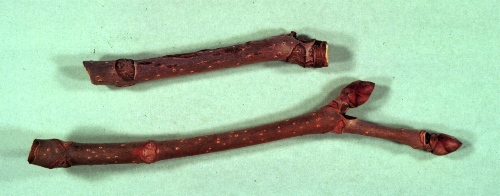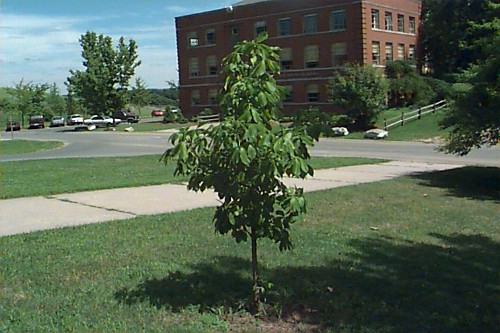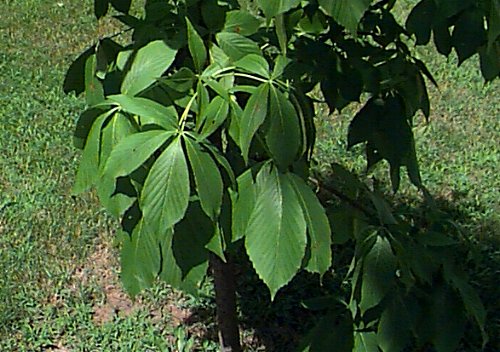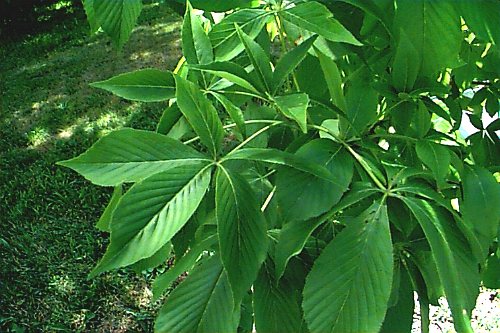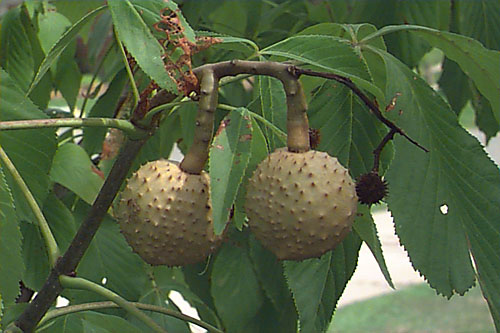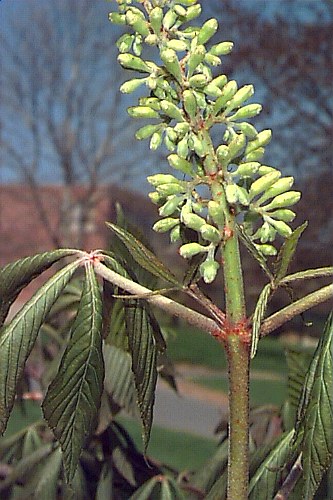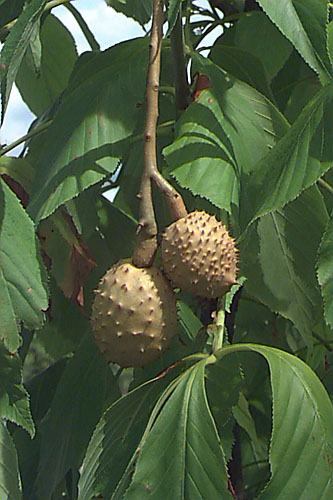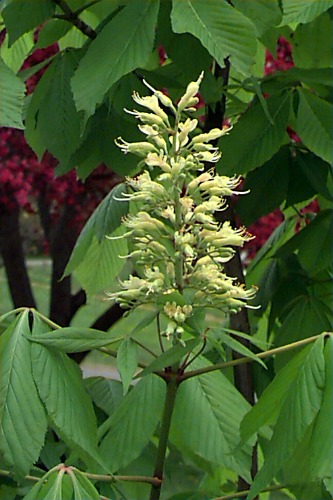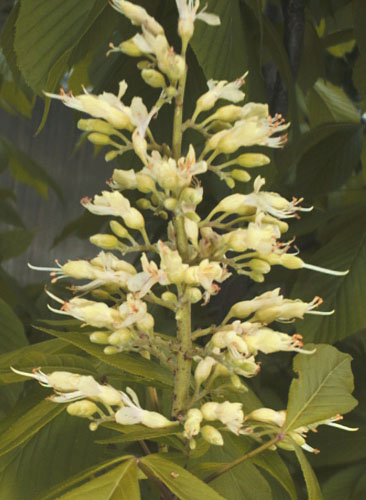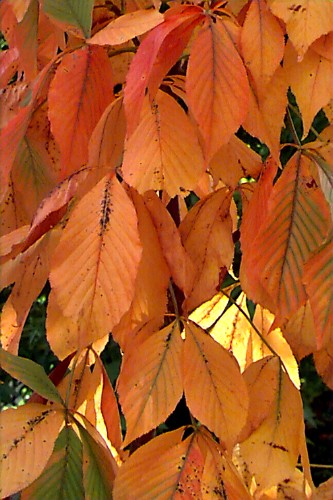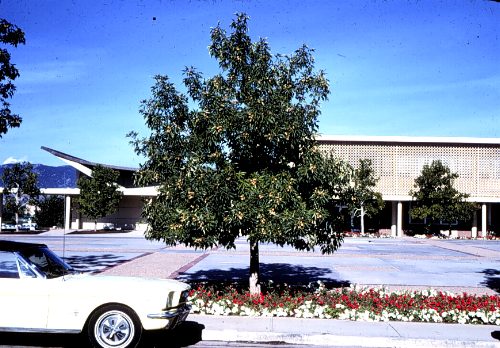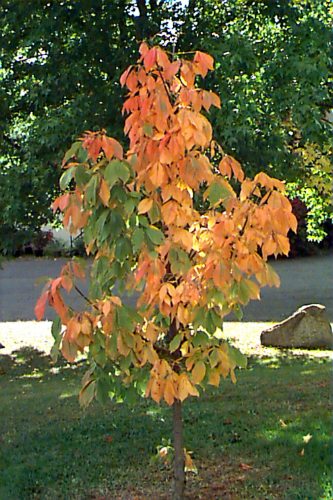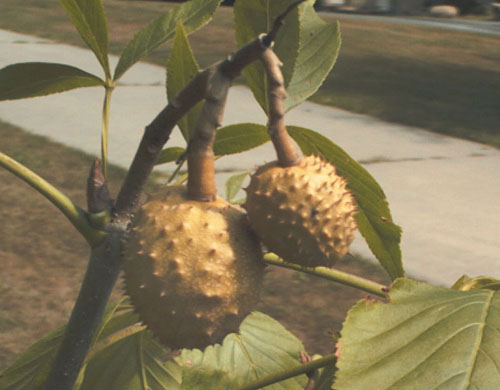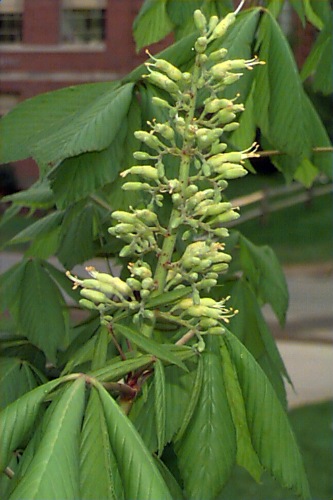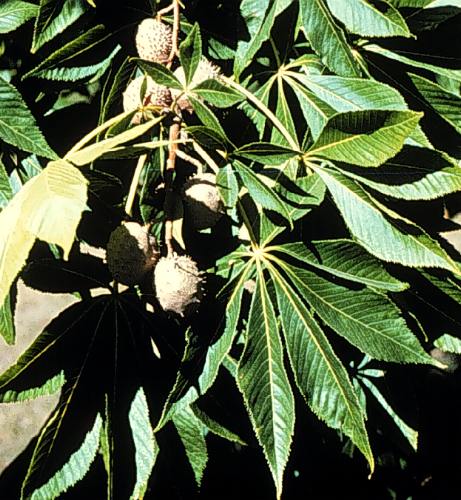Aesculus glabra
Ohio Buckeye, Fetid Buckeye
Hippocastanaceae
ExpandHabitat
- native to southeastern and Central United States
- grows natively in bottom lands along the banks of rivers and streams
- zone 3
Habit and Form
- medium shade tree; deciduous
- broad, rounded crown, with very dense, low branches
- usually under 30' tall, but can grow to 70' or taller
- droop and swoop branching limbs grow toward ground, then curve up at tips
- medium-coarse texture
Summer Foliage
- opposite, palmately-compound leaves, with 5 leaflets, each 1" to 2" wide and 3" to 6" long; petiole 1" long
- one of first trees to leaf out in spring (late March to early April)
- leaves emerge bright green, deepen to dark green
Autumn Foliage
- colors and defoliates early
- color ranges from yellow to red-brown; usually pumpkin orange
Flowers
- blooms in mid-May
- panicles 4" to 7" long; individual greenish-yellow flowers, 1" wide
- least ornamental of the genus
Fruit
- capsule, 1" to 2" long, pear-shaped
- light brown, prickly capsule opens to reveal a single seed
- seeds poisonous
Bark
- ashy-gray
- corky and warty when young, fissured when older
Culture
- prefers deep, moist, well-drained, acid soil
- full sun best
Landscape Use
- best in natural settings
- large areas (parks, large grounds) necessary for broad crown
Liabilities
- dense shade limits grass growth underneath
- leaf scorch and leaf drop are problems when planted in too small an area
- leaf blotch, powdery mildew, canker; also an assortment of scales, mealybugs, caterpillars and borers
- this species and A. hippocastanum most likely to develop troubles of this genus
- can be messy (leaf, twig, fruit litter)
ID Features
- large, palmately compound leaves typical of Aesculus
- confused with A. flava in form
- fruits have short prickles (A. flava are smooth; A. hippocastanum have long prickles)
- large terminal bud typical of Aesculus; non-resinous
Propagation
- by seed
- must race squirrels to collect seed
- often used as an understock for grafting cultivars of other Aesculus
Cultivars/Varieties
var. nana - A rare, unusual shrubby form found locally in Georgia. Forms a small, rounded bush to 6' tall.
